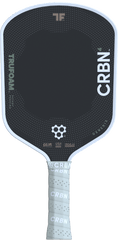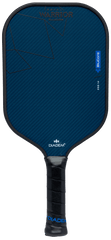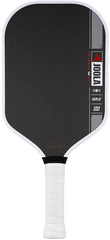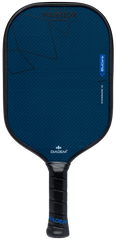In the fast-paced world of pickleball, a strong serve can really set the tone for your entire game. Whether you’re just starting out or you’ve been playing for a while, getting a grip on the different types of serves—like the underhand, overhand, lob, and drive—can give you a strategic advantage.
This guide dives into the essential techniques for nailing a successful serve, offers tips to help you master your skills, and shares ways to boost your performance during matches.
Get ready to take your game to the next level!
What Are the Different Types of Serves in Pickleball?
In the thrilling world of pickleball, mastering the different types of serves can really boost your competitive play and overall performance on the court. Whether you’re just starting out or looking to fine-tune your skills, getting a grip on the various serve types is key to gaining a strategic edge over your opponents.
This guide will walk you through four main serves: the underhand serve, the overhand serve, the lob serve, and the drive serve, breaking down their mechanics and tactical uses.
1. The Underhand Serve
The underhand serve in pickleball is a fundamental technique that can give you a strategic edge, letting you have better control and placement of the ball. It’s often easier for beginners to pull off, and when you get it right, focusing on timing and ball toss, it can be pretty effective.
To master this serve, pay attention to your grip. Keep it relaxed yet firm so that your paddle doesn’t slip when you execute the move. Your stance matters too; standing with your feet shoulder-width apart provides the stability and power you need.
As you get ready to serve, take a moment to visualize where you want the ball to go, aiming for spots that will really challenge your opponents. Don’t forget about the follow-through; guiding your paddle smoothly after impact can enhance both your accuracy and spin, making your serve even more effective.
2. The Overhand Serve
The overhand serve is one of the most powerful techniques in pickleball, allowing you to hit the ball with some serious speed and precision. To make this serve work to its full potential, you'll need to focus on your footwork and positioning on the court.
To really nail this serve, pay attention to your grip. A solid hold on the paddle can make a big difference in how the serve comes together. Engaging your core and using your arm properly during the execution phase will help you transfer energy better, and that’s key to generating an impressive amount of power behind your serve.
Practice that upward swinging motion while keeping an even follow-through; it’s a game-changer for achieving higher serve speeds. And don't forget about your stance and timing—these factors are crucial for delivering a powerful and accurate overhand serve that puts pressure on your opponents.
3. The Lob Serve
The lob serve is a clever tactic in pickleball that lets you send the ball high into the air, dropping it into your opponent's court with just the right depth and placement. When you pull it off effectively, it can really turn the tide, especially against those aggressive players who like to hang out near the net.
By adding a lob serve to your serve strategy, you can shake up your opponent's positioning, making them retreat and scramble to adjust to the unexpected height of the ball. It’s especially handy during those critical moments when the receiving player is expecting a faster serve, which can leave them wide open.
Using this tactic not only gives you a chance to regain control of the point, but it also throws your opponent off their game. When you time it just right, the lob serve becomes a powerful tool to exploit weaknesses and shift the dynamics of play in your favor.
4. The Drive Serve
The drive serve in pickleball is all about that flat trajectory, giving you a quick and powerful option that zeroes in on your opponent's weaknesses. When you combine this serve with some solid footwork and timing, you're on your way to achieving spot-on accuracy.
To master those serve mechanics, start with a good grip—usually the continental grip works best, as it helps you snap your wrist quickly during delivery. Keep your stance balanced with your feet shoulder-width apart for stability and readiness to pivot through your follow-through. As you prepare to strike, rotate your hips and shoulders together; this will amp up both your power and precision.
Finally, make sure you finish with a high follow-through to send that ball flying straight toward your target. This not only boosts your serve accuracy but also makes it tough for your opponents to respond effectively.
What Are the Basic Techniques for a Successful Pickleball Serve?
To nail a successful pickleball serve, you really need to master the basic techniques. Think about your grip, stance, ball placement, and follow-through—each of these factors plays a significant role in giving you power, accuracy, and consistency in your serve.
By zeroing in on these elements, you can seriously boost your serving performance and take your game to the next level.
1. Proper Grip and Stance
Having a solid grip and stance is key for nailing an effective pickleball serve. They lay the groundwork for your serve mechanics and overall performance. When you make sure your grip is secure and your stance is balanced, you’ll boost both your power and control during the serve.
You’ll find that different grips, like the Continental and Eastern, can really change how you strike the ball, impacting spin and speed. The stance you choose—whether it’s open, semi-open, or closed—also plays a big role in how you transfer your weight during the serve. A stable stance helps with optimal body positioning, making your serve mechanics more fluid.
Putting all these elements together is crucial, and it’s important to personalize your approach based on your playing style and the specific type of serve you want to master.
2. Ball Placement
Effective ball placement is key to making your pickleball serve both successful and strategic. By targeting specific areas of your opponent's court, you can boost your chances of winning points while putting your opponent in tricky positions.
Getting the hang of this essential skill not only sharpens your serve accuracy but also shapes your overall serving strategy. Try experimenting with different techniques, like adjusting the angle of your paddle and varying your toss height. You'll find you can place the ball exactly where your opponent least expects it.
A well-placed serve can totally catch your opponents off guard, leading to unforced errors or weak returns that you can take advantage of during the point. So, focusing on ball placement can really elevate your game, turning your serves into powerful weapons that control the pace and flow of each match.
3. Body Positioning
Proper body positioning is crucial when it comes to executing a successful pickleball serve. It affects your balance, power, and accuracy. By aligning your body correctly, you can make your serve more effective and reduce the chances of mistakes.
Take a moment to consider how your feet should be placed and how your hips and shoulders align. This attention to detail can really enhance your serve. Try to maintain an athletic stance with slightly bent knees and feet shoulder-width apart; this will give you better balance and mobility.
As you serve, focus on shifting your weight smoothly from your back foot to your front foot to generate more power. You might also want to practice some footwork drills to boost your agility and help you find the best position for each serve.
Remember, getting your body positioned just right not only supports your power but is also key to sending the ball exactly where you want it to go.
4. Follow-through
The follow-through is a crucial part of your pickleball serve technique, and it really affects the ball's trajectory and your overall serve consistency. When you nail that follow-through, you can boost both your power and accuracy, making sure your serve lands exactly where you want it to.
To achieve a smooth and effective follow-through, there are a few key things you should focus on during practice. First, keep a relaxed grip on the paddle; this makes your movements more fluid. As you make contact with the ball, extend your arms fully toward your intended target. This not only helps you generate more power but also ensures the ball glides accurately across the court.
Don’t forget to let your shoulders follow the motion too; this contributes to a more natural trajectory. Visualizing your target during the follow-through can also help you develop that all-important muscle memory, which will lead to improved performance when you're in the heat of gameplay.
What Are Some Tips for Mastering the Pickleball Serve?
To really master your pickleball serve, there are a few key tips and techniques you should weave into your training routine.
By putting an emphasis on consistent practice, soaking up knowledge from experienced players, and keeping a strong mental game, you'll see a big boost in your serving skills and overall performance on the court.
1. Practice Consistently
Consistent practice is the key to mastering any skill, including your pickleball serve. By setting aside time for specific practice drills, you can really boost your serving consistency and overall performance when you hit the court for competitive play.
Getting into a regular practice routine doesn’t just fine-tune your technique; it also helps build the muscle memory you need for nailing those perfect serves when the pressure is on. Focus on drills like the target serve drill, where you aim for specific areas of the service box, or try the serve and volley drill, which lets you practice transitioning to the net right after your serve.
These structured exercises are fantastic for reinforcing key serving mechanics and improving your accuracy. Over time, as you embrace these practice drills, you'll feel more comfortable and reliable when serving, which can really make a difference during those crucial matches.
2. Watch and Learn from Experienced Players
One of the best ways for you to elevate your pickleball serve is to watch and learn from experienced players. Observing their techniques can give you valuable insights into serve mechanics, helping you analyze and adapt your own serving style.
By diving into serve analysis and studying live matches, you’ll start to understand the nuances that go into executing an effective serve. Pay close attention to how those seasoned players position themselves, the height of their ball toss, and the way they follow through.
Notice the different serves they use, like topspin, slice, or flat serves, and think about incorporating some of these strategies into your practice. Plus, seeking feedback on your serve from coaches or fellow players can really boost your progress, allowing you to refine your approach based on what works for the top performers.
3. Experiment with Different Serves
Experimenting with different serve types can seriously amp up your game by adding some variety and unpredictability to your serving strategy. By trying out various serves, like slice and topspin, you can figure out which techniques click with your playing style.
Incorporating different serve variations into your gameplay is key to staying one step ahead of your opponents. Advanced techniques, such as kick serves or underhand serves, can really throw off your rival's rhythm and open up chances for you to score points.
Each variation comes with its own set of challenges and can work differently depending on the situation and your opponent's strengths. By embracing this diversity, you can tweak your competitive strategy and keep your opponents guessing with your serves.
Ultimately, mixing up your serve styles can totally transform your performance and boost your chances of success on the court.
4. Focus on Placement Rather Than Power
In pickleball, you’ll find that focusing on serve placement instead of just cranking up the power can really pay off on the court. By sharpening your skills to deliver the ball accurately to specific areas, you can outsmart your opponents and rack up points more effectively.
Serve finesse is crucial for gaining control of the game, letting you take advantage of your rivals' weaknesses. To boost your serve accuracy, you can incorporate dedicated drills aimed at targeting specific zones on the court. A great technique is to set up targets using cones or markers, so you can aim for those spots during practice.
Don’t forget to practice different types of serves, like top-spin or slice serves, to keep your opponents guessing. By consistently working on your serve accuracy drills, you’ll not only elevate your game but also build your confidence when the match gets intense.
How Can You Improve Your Serve in a Game?
Improving your pickleball serve while you're in the heat of the game is all about mixing strategic thinking with a bit of mental toughness. By keeping an eye on your opponents, using spin to your advantage, and varying your serve types, you can really boost your serving effectiveness and give yourself an edge in competitive play.
1. Study Your Opponent
Studying your opponent is key to crafting a killer pickleball serve strategy. By keeping an eye on their weaknesses, preferences, and court positioning, you can tailor your serves to exploit their vulnerabilities and get the upper hand in the match.
Take some time to analyze how they’ve played in previous matches. Look for patterns in their playstyle and pay attention to how they react to different types of serves. You might notice areas where they’re not as comfortable, like their footwork or how they handle low balls.
Adjusting your serving strategy based on this intel can make a huge difference. For example, if you see they struggle with deep serves, set yourself up to serve deep and put them on the defensive. Similarly, if they have a favorite side of the court, send your serves to their weaker side. This not only throws them off their rhythm but also opens up chances for you to capitalize on their mistakes.
2. Use Spin to Your Advantage
Incorporating spin into your pickleball serves can really level up your game and throw your opponents for a loop. When you master different spin techniques, like topspin and slice serves, you'll create unpredictable bounces that can be a real headache for them to return.
Using these techniques effectively not only keeps your rival on their toes but also encourages more strategic play. For example, the topspin serve gives the ball a higher bounce, which can be tricky for opponents who like to go for those lower shots. On the flip side, if you nail a slice serve, it can curve away from your opponent, opening up chances for you to take control of the point.
Knowing when to use each type of spin serve during a match can really boost your chances of gaining the upper hand. It's all about keeping your adversary guessing and making it tough for them to predict where the ball will go next.
3. Mix Up Your Serves
Mixing up your serves is a crucial tactic in pickleball that keeps your opponents guessing and off-balance. By varying the types and placements of your serves, you can create openings and take advantage of your opponent’s weaknesses.
When you implement serve variation, you not only disrupt your competitors' rhythm but also force them to adapt constantly. For example, alternating between a deep, powerful serve and a short, spin-infused drop serve can really catch players off guard and leave them scrambling. Changing the angle of your serves—like serving wide to one side and then pulling back to the center—can help you exploit gaps in your opponent’s positioning.
Having a solid serving strategy lets you make these tactical shifts, adding unpredictability to your game and boosting your chances of winning points.
4. Stay Calm and Confident
Maintaining a calm and confident mindset during your pickleball serves is crucial for optimal performance. When you have a strong mental game, it helps you execute your serves more effectively and bounce back quickly from any mistakes during competitive play.
It's important to recognize how nerves can influence your serve performance. Anxiety can lead to less controlled shots and missed opportunities, so being aware of this is key. To boost your confidence when serving, try practicing visualization techniques—imagine those successful serves before you even step onto the court.
Developing a pre-serve routine can also help create a sense of familiarity that calms your mind and focuses your energy. And don’t underestimate the power of mindfulness exercises; they can help you manage nerves, keeping you present and preventing you from dwelling on past mistakes.
Ultimately, the connection between your mental state and performance is vital. This highlights the importance of consistent mental training alongside your physical preparation.
Frequently Asked Questions
What is the pickleball serve?
The pickleball serve is the first shot that starts each point in a pickleball game. It is used to put the ball in play and begin the rally.
What are some techniques for mastering the pickleball serve?
Some techniques for mastering the pickleball serve include using proper grip, having a consistent toss, and using a fluid motion with your arm and wrist.
How can I improve my pickleball serve?
You can improve your pickleball serve by practicing regularly, focusing on the fundamentals, and seeking feedback from experienced players or coaches.
What are some tips for developing a more powerful pickleball serve?
To develop a more powerful pickleball serve, try incorporating the use of your legs and core muscles, adding more spin to the ball, and practicing different types of serves such as the drive serve or the lob serve.
Can I use my tennis serve in pickleball?
While the pickleball serve is similar to a tennis serve, there are some key differences. The pickleball serve is typically shorter and requires a lower trajectory, so it is not recommended to use your tennis serve in pickleball.
Is there a specific rule for serving in pickleball?
Yes, in pickleball, the serve must be diagonal and must clear the non-volley zone (the area within 7 feet of the net on both sides) before being returned by the opposing team.










